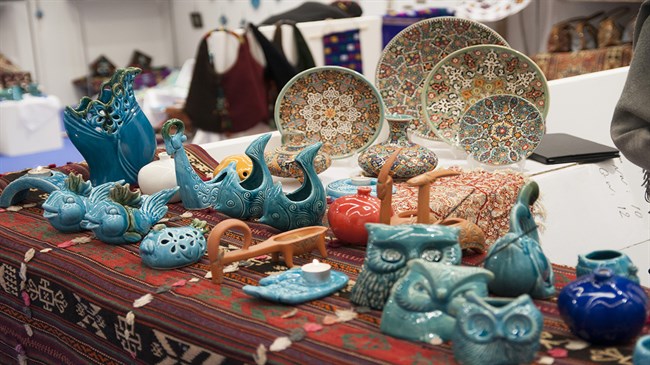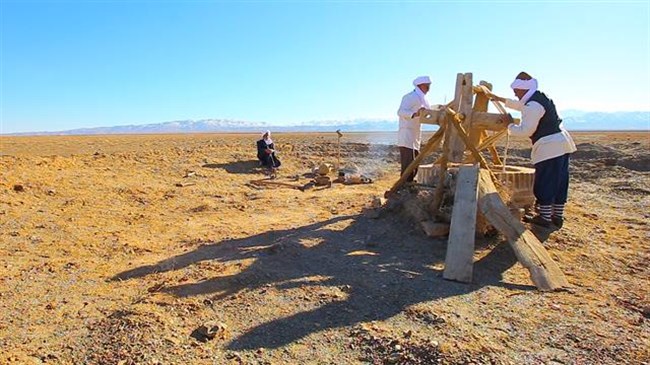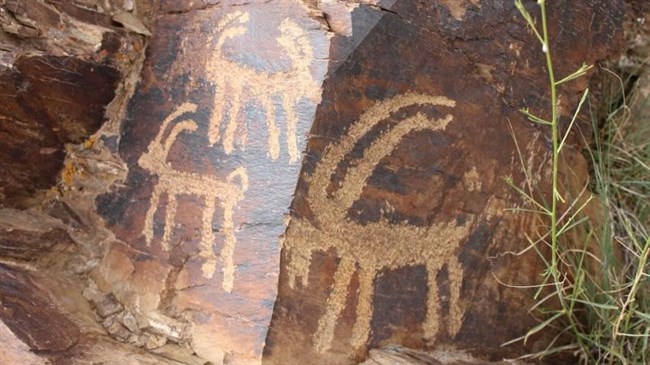
NEWS (5)
Safari, a new Kish tourism potential
Freitag, 09 Juni 2017 11:09Cultural Heritage Desk Sports, Recreational and Tourism Complex of Kish Safari has been established to develop tourism and create a fun and safe environment for all ages, especially young people and tourists to the beautiful island of Kish in the Persian Gulf. The complex is the first organizer of desert safari tours in Iran.
One of the most popular types of safari tours is Desert Tour which traverses the desert and wilderness. Types of vehicles used for these kinds of tours include two-differential and four-axle vehicles such as Land Rover and Toyota Land Cruiser as well as camel. Hot and dry desert and semi-desert climatic conditions are required for a desert tour.
In view of its suitable weather conditions and location for tourism, Kish Island has the potential to hold such types of tours.
Recreational features of this complex include an indoor restaurant, an outdoor restaurant and a coffee shop as well as handicrafts exhibition pavilions which provide and introduce various regions of Iran.
Managing director of Kish Safari Complex, Alireza Qorsi, said safari generally makes use of natural hills. Since Kish does not have natural hills, man-made mounds have been created for the purpose, he added.
Over 23 games and entertainments have been incorporated in the complex since mid-March 2016, he said.
He said Kish Safari Complex was warmly received by holidaymakers during Norouz vacation.
Such kind of complexes boost tourism industry, he added.
Somayyeh Talebzadeh, who has traveled to Kish Island with her friends, said: "Good facilities have been created for entertainment. It has good recreational environment for women."
Reza Shadmani, who traveled to the island with his wife, said: "I had a memorable experience of safari tourism. Its secure and healthy environment was important for us."
Kish Safari Complex can prevent the outflow of hard currency, he added.
39 ancient sites identified in northwest
Freitag, 09 Juni 2017 11:07
Thirty nine ancient sites including mounds, castles and graveyards pertaining to various cultural-historic eras were identified in the vicinity of Silveh Dam, Piranshahr, northeast of Iran, said the head of the archeology team in the region.
Afrasiab Geravand further said that northwest of Iran, which links Iranian Plateau, Caucasian, Asia Minor and Mesopotamia, played a great role in establishing cultural ties throughout history.
He added that Silveh Plain ― due to its permanent rivers, springs, flora and fauna species, pastures and fertile lands ― has been apt for human settlement since olden times.
Silveh Plain stretches over an area of 99 sq.kms. to the northwest of Piranshahr, he added.
Based on studies conducted on potteries found in the area, he said, it was evident that the relics pertained to Neolithic, Copper Stone, Brass, Iron and early-Islamic eras.
Piranshahr is located in West Azarbaijan Province and is one of the Iran's oldest cities. Its establishment dates back to the pre-Islamic era of Iran and the emergence of the Median dynasty.
In Piranshahr every literate person knows how to communicate in Persian language.
The city is one of the fastest-growing in Iran.
The history of Piranshahr can be traced back to the Paleolithic period. In recent discoveries, archeologists have found artifacts dating back to the Paleolithic, Mesolithic, Neolithic, Bronze and Iron ages. The earliest evidence of settlement in the Piranshahr region dates back to about 14,000 years ago.
Handicraft booths to be set up in the provinces
Freitag, 09 Juni 2017 11:05
All the provinces will have handicraft booths to facilitate access to souvenirs by both domestic and foreign tourists, said the director general of Handicrafts' Export Office at Iran's Cultural Heritage, Handicrafts and Tourism Organization (ICHHTO).
Pouya Mahmoudian further said that 16 handicraft booths were inaugurated in women's park during the visit to Zanjan by the Head of ICHHTO Zahra Ahmadipour.
Three other booths will also be inaugurated shortly in Kermanshah, west of Iran, she noted.
Mahmoudian said: "Our goal is to set up such booths in tourism regions as well as cultural heritage sites in the first phase and establish them in other cities in the second phase."
The booths should have a common symbol ― logo of ICHHTO ― to make them more reliable for potential customers, she added.
About 5.2 million people are involved in 250 fields of the handicraft industry such as such as carpet and kilim weaving, glass making, pottery and traditional ornaments.
Experts say the elegance of manmade goods produced in Iran and the availability of raw materials are among the attractions of the sector.
The appetite of European and US collectors for Iranian handicrafts is yet another factor.
Inlaid work, kilim and carpets constitute the bulk of handicraft exports from Iran.
Iran, China and India are the three top countries in the production and exports of handicrafts.
International organizations believe Iran has the most diverse and highest quality handicrafts in the world.
Currently, China's handicraft production is greater than Iran's, but the diversity and quality are higher in Iran.
Studies have confirmed that Iran is the birthplace of various handicrafts like carpet, metal works, pottery and ceramics.
Currently, these exquisite Iranian works are displayed in museums and art centers of the world.
Although Iranian handicrafts are on top of the line, suitable schemes are needed to enter new markets and publicize handicrafts worldwide.
In fact, handicraft can serve as a mechanism for promoting Iranian and Islamic culture worldwide.
Isfahan is the capital of Iran's handicraft industry and is home to two-third of Iran's handicraft diversity and one-third of the world's handicrafts.
3,000-year-old art rocks in northeast to be registered
Freitag, 09 Juni 2017 11:01Cultural Heritage Desk
Ancient region of Kamar Maqbula is located 3km off Torqabeh to the northwest of Mashhad, Khorasan Razavi Province in the northeast of Iran. The 3,000-year-old site is awaiting registration on the National Heritage List.
There are 15,000 rock arts in Kamar Maqbula site.
Deputy head of Khorasan Razavi Cultural Heritage, Handicrafts and Tourism Department said that Kamar Maqbula boasts the highest number of art rocks in Iran.
Hassan Asghari further said that currently, cultural heritage enthusiasts cooperate with Cultural Heritage Protection Unit and play a significant role in safeguarding the art rocks.
He added that Cultural Heritage Protection Unit frequents the region.
Also, Binaloud Governor's Office and Public Prosecutor's Office have taken effective steps to preserve the art rocks.
There are many organizations such as Natural Resources Organization and Industry, Mine and Commerce Department that can assist in preserving the natural-historical region of Kamar Maqbula.
He said the dossier for national registration of Kamar Maqbula has been drawn up.
A region known as 'Kamar Maqbula' is located 3km from Torqabeh and one kilometer from Daghestan Valley. This pristine region is covered with volcanic rocks and has a very nice landscape that is also pleasant for tourists. Close to this valley there is a natural recreational park that is open to interested people and scientific groups.
See the ancient water tunnels below Iran's desert
Freitag, 09 Juni 2017 11:10
From above, it seems as though a series of holes were pierced in the desert's dry surface. But a hundred feet below the mysterious pits, a narrow tunnel carries water from a distant aquifer to farms and villages that wouldn't exist without it.
These underground aqueducts, called 'qanats', are 3,000-year-old marvels of engineering, many of which are still in use throughout Iran. Beginning in the Iron Age, surveyors — having found an elevated source of water, usually at the head of a former river valley or even in a cave lake — would cut long, sloping tunnels from the water source to where it was needed, National Geography reported.
The orderly holes still visible aboveground are air shafts, bored to release dust and provide oxygen to the workers who dug the 'qanats' by hand, sometimes as far as forty miles. The tunnels eventually open at ground level to form vivid oases.
Constructing qanats was a painstaking task, made even more so by the need for great precision. The angle of the tunnel's slope had to be steep enough to allow the water to flow freely without stagnating — but too steep and the water would flow with enough force to speed erosion and collapse the tunnel.
Although difficult work — even after completion, 'qanats' require yearly maintenance — the irrigation tunnels allowed agriculture to bloom in the arid desert. The technology spread, through Silk Road trade and Muslim conquest, and 'qanats' can be found as far as Morocco and Spain.
For Komeil Soheili, an Iranian videographer, 'qanats' are an integral part of the landscape of his native Khorasan Province.
"The diversity of landscapes and cultures [in Iran] is something that's not well understood by the world," Soheili said. "One of the oldest civilizations in the world came from this amazing creation, [the 'qanat'.]"
Gholamreza Nabipour, 102, is one of the last and almost certainly the oldest caretaker of 'qanats'. Recognized by the Iranian government as a national living treasure, Nabipour tries to share his craft with younger generations — including one of his sons, who uses a qanat to irrigate his pistachio farm — but fears for the future of this fragile tradition.
In the 1960s and 1970s, the subdivision of the large estates that relied on 'qanats' caused an administrative tangle, and many 'qanats' fell into disrepair without the traditional communal maintenance. And as modern agriculture takes root, Soheili explained that people don't depend on 'qanats' anymore, as it was before. "It's not possible to feed your family and earn money by working in 'qanats'," which have become less a way of life and more of a 'hobby'.
In 2016, UNESCO listed the Persian 'qanats' as a world heritage site.
"These 'qanats' have been the source of life for me and all of my ancestors," said Nabipour. "It's my duty to preserve them until the last second of my life."


